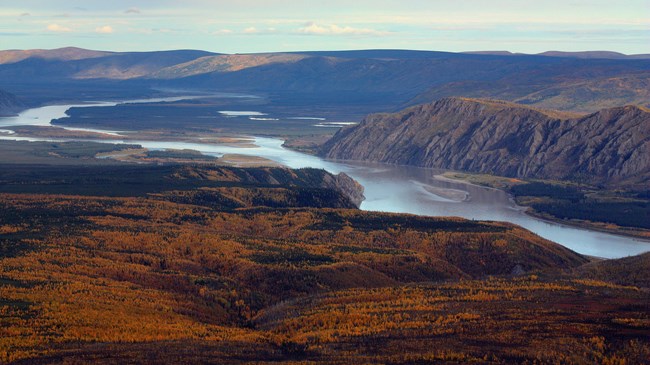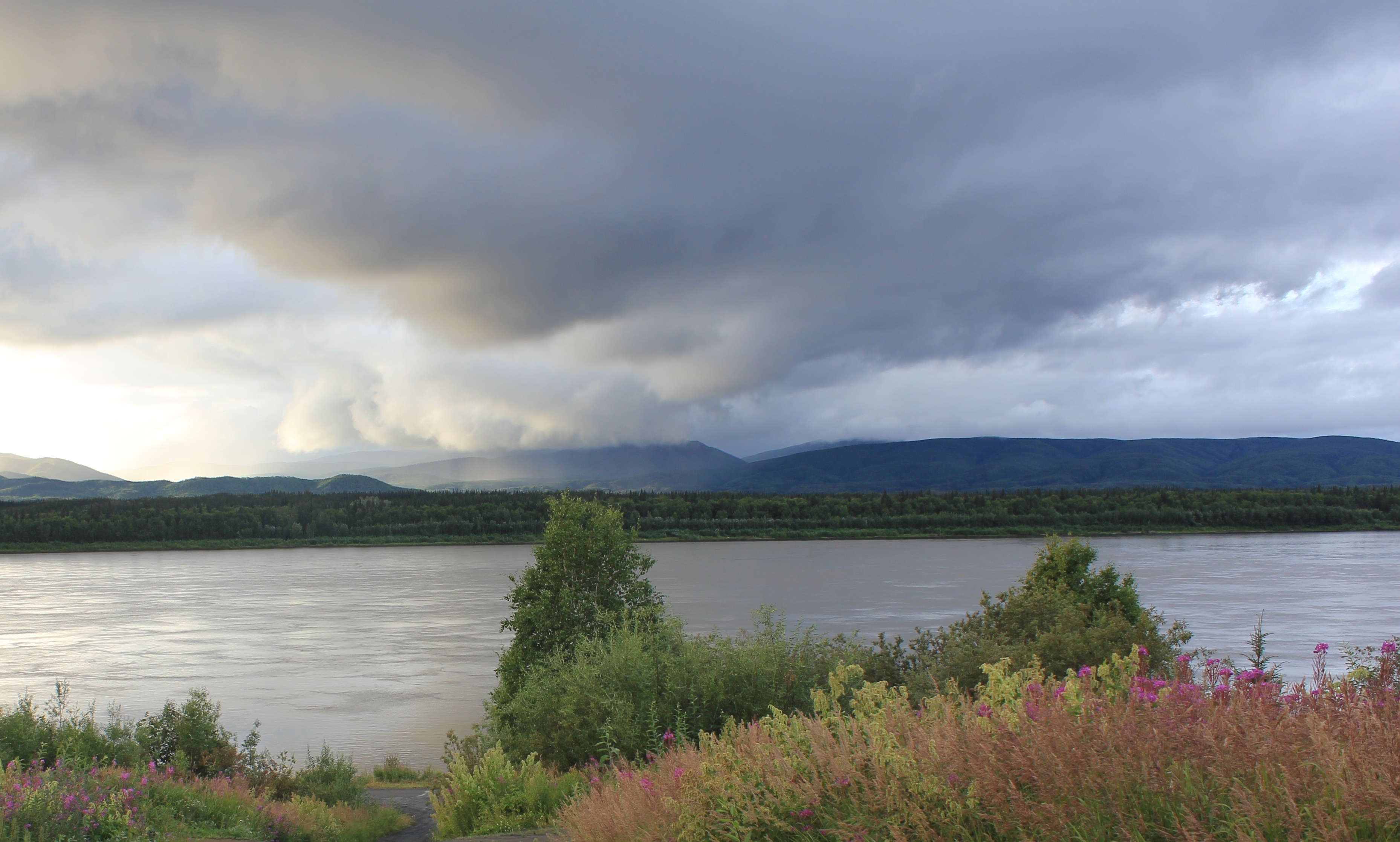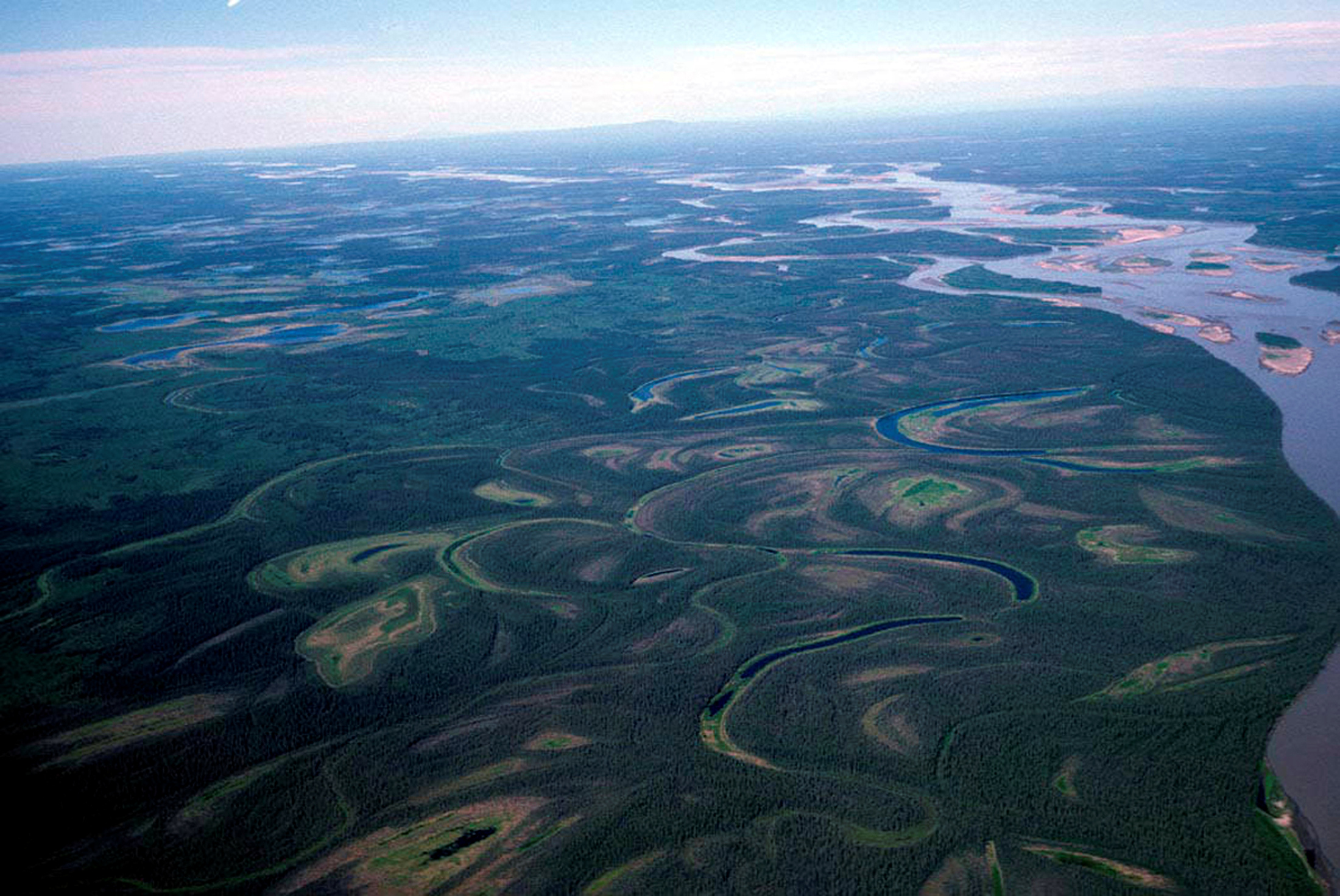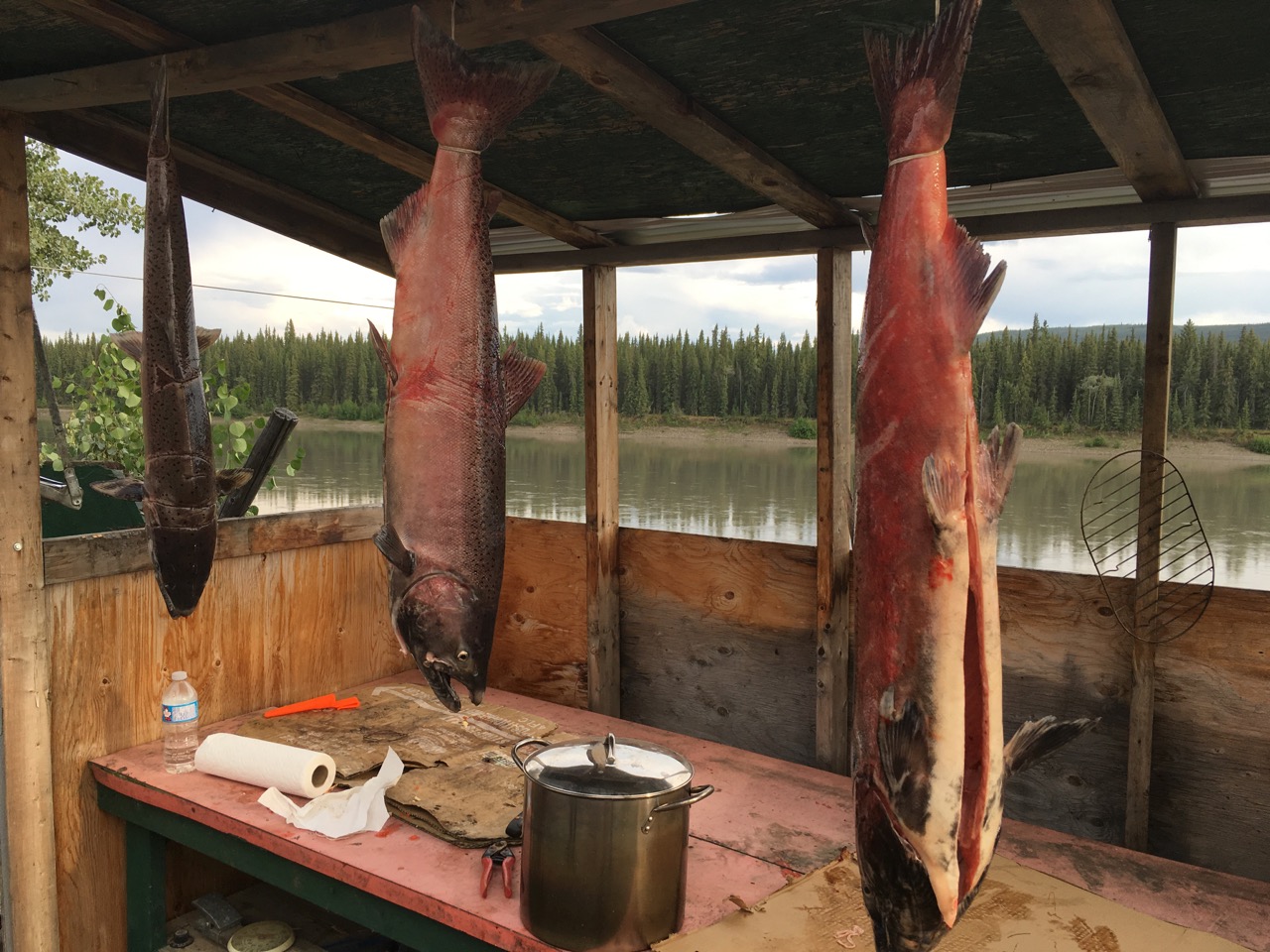Yukon River, beset by salmon woes and mercury threats, signals broader Arctic climate change
“What happens on the Yukon definitely does not stay in the Yukon.”

Flowing from the foot of mountain glaciers in northern British Columbia nearly 2,000 miles to the Bering Sea, the Yukon River is a bellwether of Arctic conditions. And this year along the Yukon, alarms are sounding.
Salmon returns on which Indigenous Alaskans and Canadians depend for their livelihoods, diets and culture, are struggling.
This year’s run of Yukon River Chinook salmon was so weak that it failed to adequately replenish populations in Canadian portions of the river, according to government reports. As of the end of August, the amount of Chinooks passing through to Canada was more than 20 percent below the bottom-level target established by an international treaty, according to the U.S. Department of the Interior’s subsistence management program.
The Yukon River fall chum salmon run has been the lowest on record, according to federal officials. There is not even enough chum salmon to allow for subsistence harvests in the Alaska portion or the river, according to the Alaska Department of Fish and Game, and Canadian authorities on Sept. 10 closed off their portion of the river and its tributaries to sport fishing of either Chinook or chum salmon.
The result is a food crisis for many people, a situation exacerbated by a coronavirus pandemic-related shortage of air-shipped groceries, said Stephanie Quinn-Davidson, director of the Yukon River Inter-Tribal Fish Commission.
“It’s been a dismal, dismal year,” she said. “It’s just sort of a perfect storm of bad salmon runs for king salmon and chum and then COVID on top of that.”

To help ensure that people have enough to eat, Quinn-Davidson has ordered shipments of 80,000 pounds of chum and silver salmon from elsewhere in Alaska.
But it’s not just people who are going without salmon. Mushers in some of the villages have called for help because they are out of food to feed their salmon-eating sled dogs. “There was not even enough chum salmon for people, let alone dogs,” Quinn-Davidson said.
To help the dogs, she has issued a call on social media seeking donations and assistance from dog-food companies. Various companies have made inquiries and are interested in helping, she said.
“I’ve been, I guess, pretty touched by all the response we’re getting from people,” she said.
Quinn-Davidson is not a musher herself, but she lived along the Yukon River in the past and is a fan of mushing and the canine athletes. “I just love dogs,” she said.
[Mercury released by permafrost thaw puts Yukon River fish at risk, a new study finds]
This year’s salmon shortage may be a short-term challenge, but other long-term problems loom.
Thaw of permafrost in the California-sized Yukon River basin is threatening to loosen long-frozen mercury that exists naturally in the soil, studies have shown.
There are signs that mercury levels are already increasing as the climate warms and permafrost thaws. Now, concludes a new study published in the journal Nature Communications, mercury levels in the river will be headed into dangerous territory if carbon emissions are not curbed.
At current emissions levels, mercury levels in the river are on track to double by the end of the century and mercury levels in the river’s fish are on track to exceed federal safety guidelines by 2050, according to the study.
However, if carbon emissions are curbed to meet standards set in the 2015 Paris climate agreement, such a dire fate would be averted — mercury concentrations in the river would increase by only 14 percent by century’s end, and fish would remain at or below mercury safety thresholds.

More than fish are at risk, said lead author Kevin Schaefer of the National Snow and Ice Data Center. Mercury freed from thawed permafrost will go into the ocean and atmosphere, affecting the rest of the world, Schaefer said.
“What happens on the Yukon definitely does not stay in the Yukon,” he said.
There are dangers of thaw-released mercury in other big Arctic rivers, Schaefer said. “They’re going to have a similar story,” he said.
For example, Canada’s Mackenzie River, in its stretch just before it dumps into the Beaufort Sea, fans out through permafrost-rich territory, so even moderate amounts of thaw there could release relatively large amounts of the element, he said.
Schaefer said he and his colleagues are continuing their research and will refine studies to consider how thaw-released mercury will affect different species of Yukon River fish. They will also refine estimates of where the freed mercury goes, he said.
Long-term climate warming is demonstrated in the expanding ice-free seasons on the Yukon and other Alaska rivers, which have cascading effects.
The free-flowing waters allow more heat to be carried into the riverbanks, hastening the thaw that is releasing sequestered mercury and changing the water’s chemistry in other ways. A U.S. Geological Survey-led study published in 2016 showed how permafrost thaw had caused increased levels of magnesium, calcium, sodium and other chemicals in the Yukon River and in one of its tributaries, the Tanana River.
The expanded open-water season — increased water flow in the cold seasons and earlier breakup of ice in the spring — is linked to increased erosion along the banks of the Yukon, as documented in a University of Alaska Fairbanks-led study that used satellite imagery collected between 1984 and 2017.

Increased river erosion can have serious effects on those living along the river, Quinn-Davidson said. For example, erosion spurred an emergency fishing-rule change in Alaska two years ago, she said.
Normally, fishermen along the lower Yukon River are required to harvest chum salmon with setnets that are fixed to the riverbanks or fish wheels — gear that requires placement in river eddies, she said. But erosion wiped out many of those eddy sites, so in 2018 the Alaska Board of Fish allowed harvesters to use drift gillnets, which are mobile.
Exactly what is causing the salmon problems and where the trouble spots are has yet to be determined.
This year’s poor returns are part of a pattern. Runs have been volatile for several years, with Chinook in decline since the 1990s, according to the USGS. Heat stress in the freshwater environment is being studied as a possible contributor; through the study, USGS biologist Vanessa von Biela has documented the first heat stress in northern salmon. Signs of heat stress she found in salmon from the Yukon River watershed were similar to those that have been found much farther south, in areas like Oregon, she said during a webinar held by the Alaska Native Tribal Health Consortium’s Local Environmental Observer Network.
Last year, masses of chum salmon died of apparent heat stress before they were able to spawn in the Koyukuk River, a Yukon River tributary. Quinn-Davidson organized a journey up the river to witness the damage.
Whether last summer’s deaths will affect future runs won’t be known until fish from 2019 return after they spend their time in the ocean, Quinn-Davidson said.
“We won’t see the impact of that die-off for another three or four years,” she said.